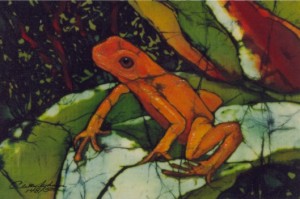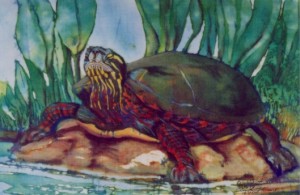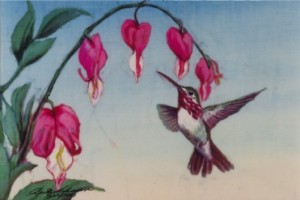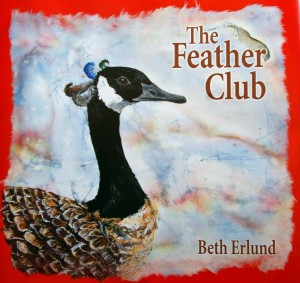Batik and Encaustic Paintings
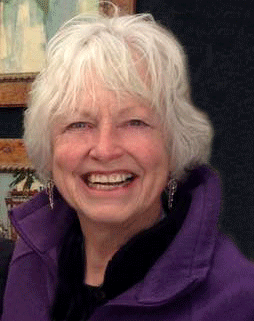
Having been a professional batik artist for the past thirty years, Beth Erlund Johnson has done a lot of experimenting which has led to a unique look in her batiks.
Using her plein air paintings, on-site sketches and photographs she makes detailed sketches of the designs before beginning the batik process. Beth then produces the design by dyeing cotton or silk cloth thirty to fifty times using traditional dip dyeing techniques to form an image.
She preserves the colors each time by drawing the areas that she wants to remain with hot wax using the ancient tjaunting tool. At the end, most of the wax is removed.
Since Beth has been a wildlife artist for more than 30 years, animals are still a major focus of her art. However, because she believes that artists need to always expand their horizons, she is continuing to produce pieces in her new “Memory Files” series which depict places she has been often with appropriate birds or animals as seen through opening the door to her mind.
Her batiks are included in the permanent collections of five art museums and part of many corporate collections. She has also written and illustrated 3 children’s books, I Thought I Saw An Alligator, The Feather Club, and A Lizard’s Tale. “My hope is that by my capturing a moment in time, my art has made a lasting impression on many people and help them to better enjoy nature and the world around them.”
BATIK: Batik is an art media using wax and dyes to make a picture on cloth. Over 2,000 years ago, the Chinese, Japanese and Egyptians used beeswax and resin to make designs to decorate fabrics that they dyed. Today, Batik is created by drawing a pencil sketch on cloth and then drawing with hot beeswax and paraffin, using a tjaunting (a small brass cup counted on a wooden handle.) The portions that are to remain white are drawn first. The waxing and dying process is repeated, working from the lightest color to the darkest until the design is completed. Then most of the wax is removed.
When the cloth is dry, wax is again applied to the portions that are to remain the color of the cloth and it is dyed again. This process is repeated 30 – 40 times to achieve the details for each color. Finally, the wax is removed and the picture can be seen in the cloth. During the dying process, the wax cracks and reveals little lines of color, adding the characteristic “crackle look’ that identifies the cloth as Batik.
Encaustic is a mixing of beeswax, resin and pigments used to draw fine lines of texture atop a surface like Batik. Heat is used to melt the mixture and first it to the surface.
Beth Erlund Johnson lives in Morrison, Colorado.

